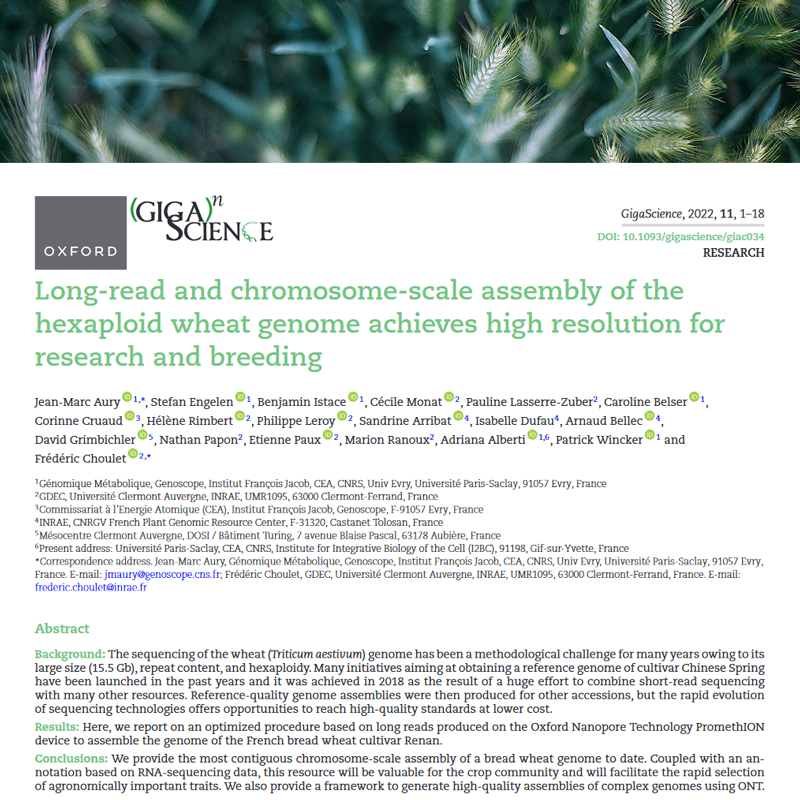In the frame of the WheatOMICS project, teams from UMR GDEC, Genoscope and CNRGV have produced a chromosome-scale assembled genome sequence of the bread wheat variety Renan.
This winter wheat variety created by AgriObtentions, a subsidiary of INRAE, is still widely used 30 years after its registration, especially in organic farming for its yield regularity, disease resistance and baking value.
The strategy relied on the use Oxford Nanopore Technology's (ONT) long-read sequencing technology to decipher this 15 Gb genome, containing more than 85% of repetitive sequences with a hexaploid structure resulting from the hybridization of three genomes, A, B and D.
To make the most of the capacity of ONT technology to produce very long reads, we extracted high molecular weight DNA for long-read sequencing at the Genoscope. At the same time, short-read sequencing was performed. The combination and assembly of these sequences allowed us to obtain contigs with an N50 of 1.1 Mb.
In parallel, we performed the extraction of very high molecular weight DNA and produced the optical map of the genome. The resulting optical map had an N50 of 37.5 Mb.
The combination of the sequencing and optical map data finally yielded 79 scaffolds with an N50 of 48 Mb.
The annotated Renan genome is a resource to facilitate rapid selection of traits of agronomic interest and contributes to the knowledge of the genetic diversity of bread wheat.

